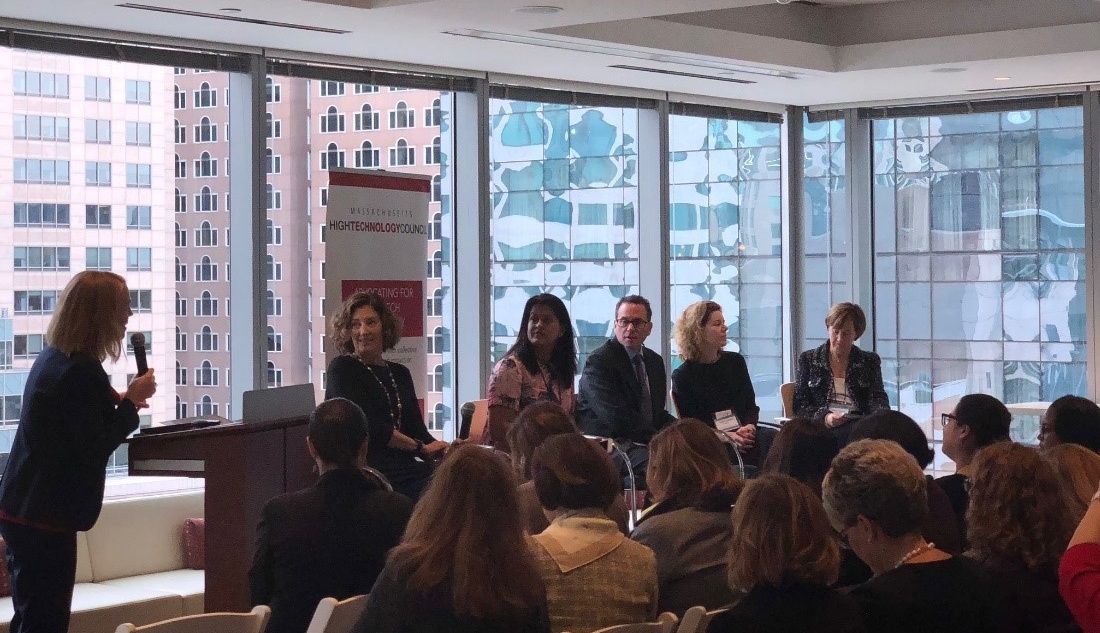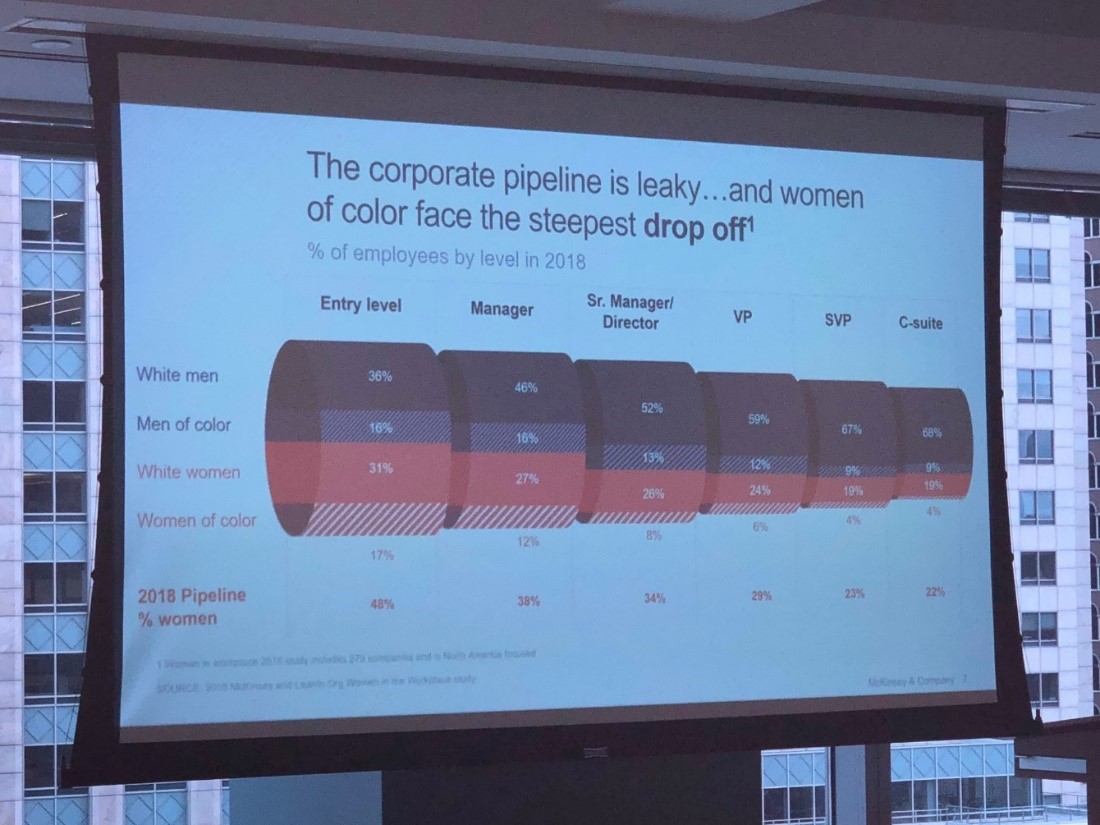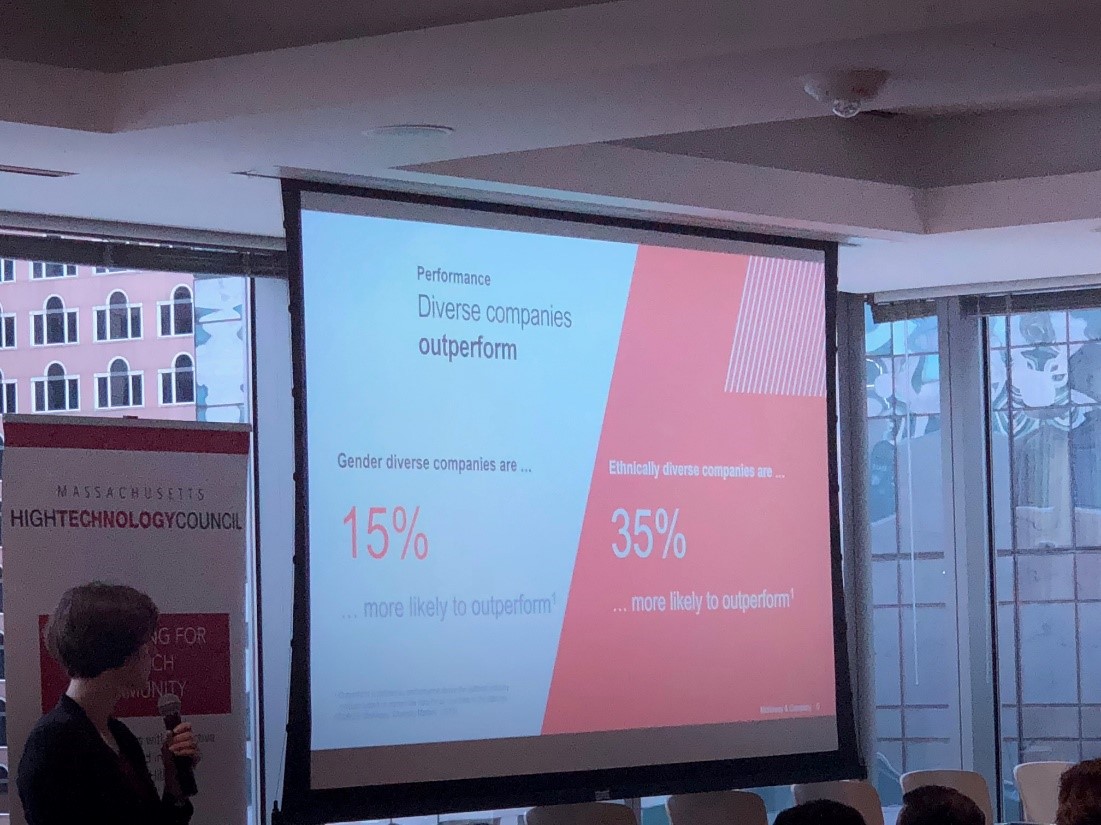
This morning, I attended a program for Changing the Trajectory: How Companies Can Lean in Too, co-hosted by reacHIRE, McKinsey & Company and Massachusetts High Technology Council. In front of a standing room only crowd with representatives from over 75 organizations, McKinsey’s Dr. Megan Greenfield kicked-off the morning with a high-energy, evidence based presentation on McKinsey and LeanIn.org’s recently launched 2018 Women in the Workplace study. It was followed by a panel discussion on women leadership, talent management and engagement along the talent pipeline.
Panelists included:
- Kate Gulliver, VP & Global Head of Talent, Wayfair
- Dr. Laurie Leshin, President, Worcester Polytechnic Institute
- Paul Lesser, Head of Talent Acquisition, Fidelity Investments
- Parul Singh, Principal, Founder Collective
- Addie Swartz, CEO, reacHIRE
- Moderated by: Sarah Green Carmichael, Senior Editor, Harvard Business Review
What was really surprising to me as I listened to the McKinsey Leanin.org report findings (we will refer to as McKinseyR), there are noticeable and notable similarities to findings from the MassBio/Liftstream gender diversity report from 2017 (we will refer to as MassBioR). even though the reports are almost two years apart and the MassBioR only surveyed Massachusetts biotech company, whereas the McKinseyR involved different industry, sectors and sizes of companies from across the country. Looking at both surveys, there is a clear pattern across industries and throughout the country: both men and women enter the workforce in approximately equal proportion but the gender-gap grows at all career stages, despite women aspiring to the C-suite and board positions the same as men. Of note, the MiKinseyR found that women fall behind immediately with women 21% less likely to be promoted to manager than men. Both reports also exhibit some longstanding assumptions on why the gender-gap exists. And both reports recommend companies be accountable by taking intentional and measurable action to make a lasting different in D&I. Click here to compare the MassBioR recommendations to those in the McKinseyR.

Survey data for the McKinsey Report included 279 companies (employing more than 13 million people) who shared their pipeline data and completed a survey of their HR practices. In addition, more than 64,000 employees were surveyed on their workplace experiences and they interviewed women of different races and ethnicities and LGBTQ women for additional insights.
What’s the case for better diversity:
According to the report, “articulating a business case, setting goals and reporting on progress, and rewarding success are key to driving organizational change. Companies need to treat gender diversity like the business priority it is.”
- Diverse companies are more likely to outperform by 15% for gender diversity and by 35% for ethnic diversity.
- For example: ‘if you are only picking white males for your team, which only represent 30% of the population and I am all members that represent the population, I am going to have the winning team”.

Below are my takeaways from the event:
- Women are asking for raises and promotions at the same rate as men.
- For companies to move the needle in closing the gender gap, we need to create intentional programs to improve outcomes.
- There are plenty of ‘landmines’ along the career pipeline. Support women earlier in their careers through coaching, mentoring and training so that they can thrive, rise, lead and stay. Don’t leave their talent sitting and underutilized.
- In the end, it all about action and making change. If you want something new, you must stop doing something old.
- Be suspect of leaders who only ‘talk about it’ and not ‘be about it’.
- Acknowledge or be appreciative of those who are active participants
- Women are too often the ‘Only’ one and negative experiences can take a toll on ‘Onlys’. Companies are responsible for creating an inclusive and respectful environment.
- Offer all employees the flexibility to fit ‘work’ into their lives. For example, when a woman has to take an extended leave for whatever life experience, treat it as a sabbatical to learn and not a career break.
- Hold senior executives accountable for D&I movement through performance reviews and bonus structure.
- “Chances are you are your worst critic, so be kind to yourself.” Be willing to ask for help and keep people around you who lift you up.
My main takeaway from the event is that D&I issues and potential solutions are so similar across industries that we cannot stay siloed as we collectively look to implement lasting change. Learning from what other sectors and leaders are doing will have a positive impact on life sciences companies, and the other way around. I look forward to being that link between our industries and others in Massachusetts and beyond.
– Edie Stringfellow, Director of D&I at MassBio